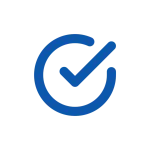As a software developer, I’ve come to realize the immense importance of creating solutions that prioritize the protection and security of sensitive healthcare information. In the digital age, where data breaches are becoming increasingly common, it is essential to adhere to strict standards and regulations to ensure the privacy and confidentiality of patient data. One such vital regulation in the healthcare industry is the Health Insurance Portability and Accountability Act (HIPAA). In this blog post, I will delve into the realm of HIPAA compliant software development, explaining what HIPAA is, what it takes to be HIPAA compliant, and the software development process within the HIPAA framework.
Understanding HIPAA
HIPAA, the Health Insurance Portability and Accountability Act, was enacted in 1996 in the United States to establish national standards for the protection of individuals’ medical records and other personal health information. The primary goal of HIPAA is to ensure the privacy, security, and integrity of protected health information (PHI). PHI includes any individually identifiable health information transmitted or maintained by covered entities, such as healthcare providers, health plans, and healthcare clearinghouses.
HIPAA Compliance Requirements
To be HIPAA compliant, software developers must adhere to a set of rigorous requirements. Let’s take a closer look at some key elements that contribute to HIPAA compliance:
- Administrative Safeguards: These include policies, procedures, and training to manage the selection, development, implementation, and maintenance of security measures. It involves appointing a privacy officer, conducting risk assessments, and defining workforce security policies.
- Physical Safeguards: These encompass measures to protect the physical systems that store or transmit PHI, such as access controls, facility security plans, and the use of locked rooms or cabinets.
- Technical Safeguards: These involve the implementation of technology-based solutions to ensure the secure transmission and storage of PHI. Examples include access controls, encryption, audit controls, and secure messaging.
- Organizational Requirements: Covered entities must have business associate agreements (BAAs) in place with any third-party vendors or service providers who handle PHI on their behalf. BAAs outline the responsibilities of each party regarding HIPAA compliance.
HIPAA Compliant Software Development Process
Developing software that complies with HIPAA requires a comprehensive and meticulous approach. Here’s an overview of the key steps involved:
- Define Scope and Objectives: Clearly outline the goals, functionalities, and scope of the software solution. Determine whether it will involve handling PHI and identify potential risks and vulnerabilities.
- Conduct Risk Analysis: Perform a thorough assessment of potential security risks and vulnerabilities associated with the software and its environment. Identify and prioritize potential threats and develop strategies to mitigate those risks.
- Design and Development: Implement security controls and best practices during the design and development phase. Ensure that access controls, encryption, and data transmission security measures are in place.
- Testing and Validation: Conduct extensive testing to validate the effectiveness of security controls and ensure compliance with HIPAA requirements. This includes vulnerability testing, penetration testing, and rigorous quality assurance.
- Documentation and Policies: Maintain detailed documentation of the software’s design, development, and security measures. Develop and implement policies and procedures that govern the use and protection of PHI.
- Training and Awareness: Educate employees and users about HIPAA regulations, security practices, and their responsibilities in safeguarding PHI. Provide training sessions and maintain ongoing awareness programs.
- Ongoing Monitoring and Maintenance: Regularly monitor and update the software to address emerging threats and vulnerabilities. Conduct periodic risk assessments, security audits, and software updates to maintain HIPAA compliance.
Examples of HIPAA Compliant Software
Several software solutions have successfully achieved HIPAA compliance. Here are a few examples:
- Electronic Health Record (EHR) Systems: These platforms store and manage patient health information securely. Examples include Epic, Cerner, and Allscripts.
- Telehealth Platforms: With the rise of telemedicine, HIPAA-compliant video conferencing tools like Doxy.me, Zoom for Healthcare, and VSee enable secure remote consultations.
- Practice Management Systems: Software solutions like Kareo and NextGen provide comprehensive practice management functionalities while ensuring HIPAA compliance.

Conclusion
Developing HIPAA compliant software is a complex and demanding process that requires a deep understanding of the regulations and security requirements outlined by HIPAA. By adopting a meticulous approach, incorporating the necessary safeguards, and continuously monitoring and updating the software, developers can create solutions that safeguard sensitive patient information effectively. As the healthcare industry continues to rely heavily on technology, adhering to HIPAA compliance standards is paramount to protect patient privacy and ensure the integrity of healthcare data.



